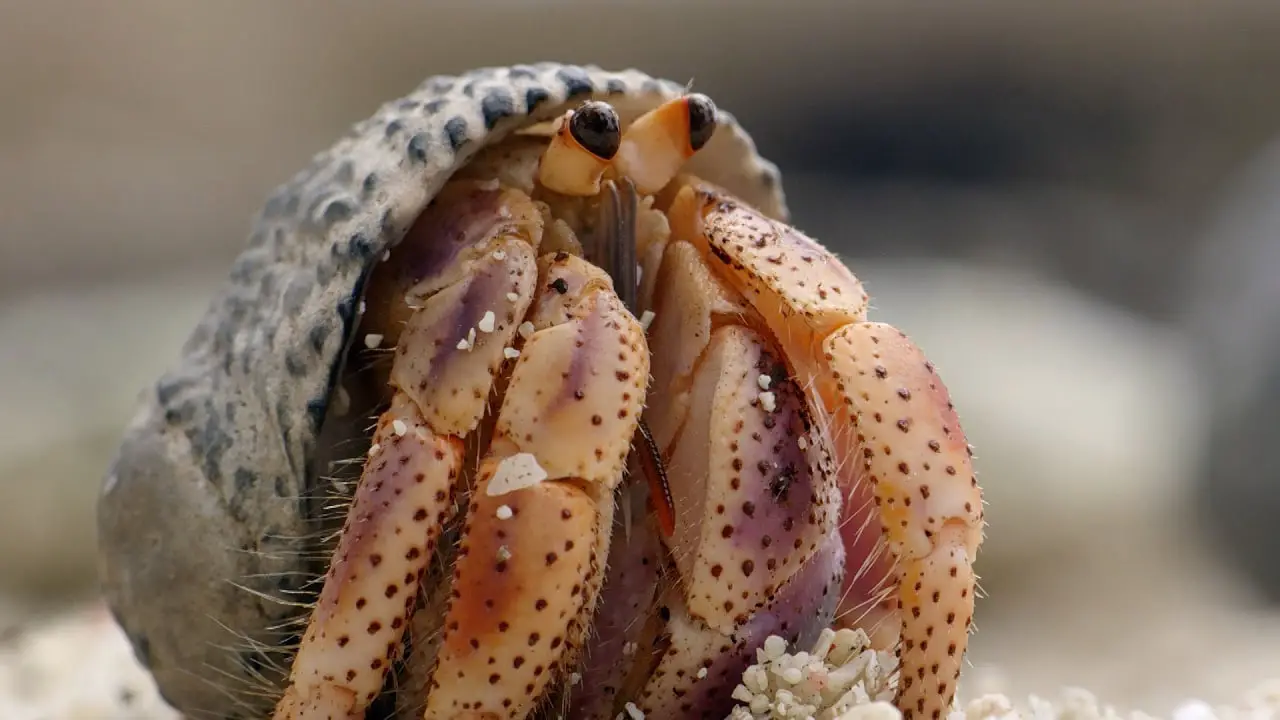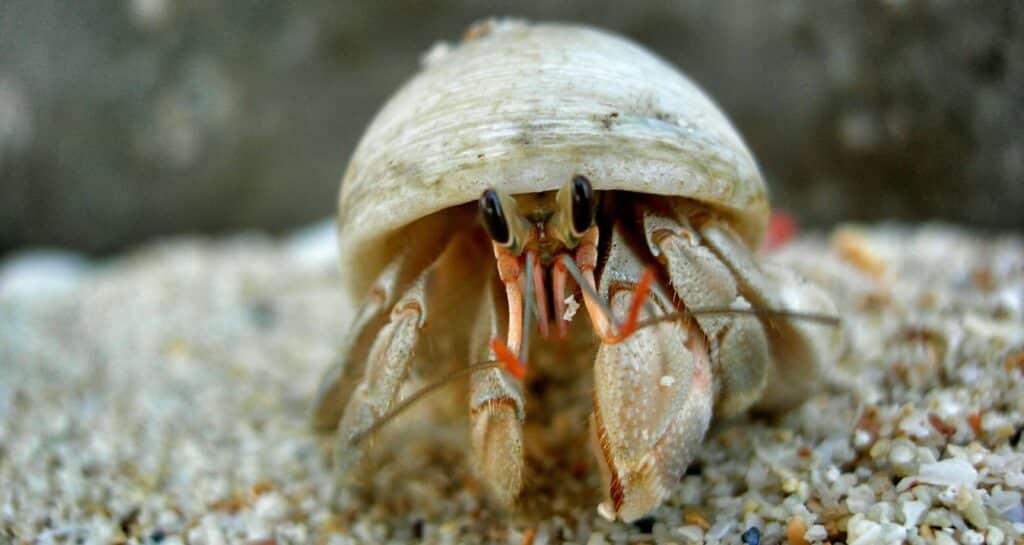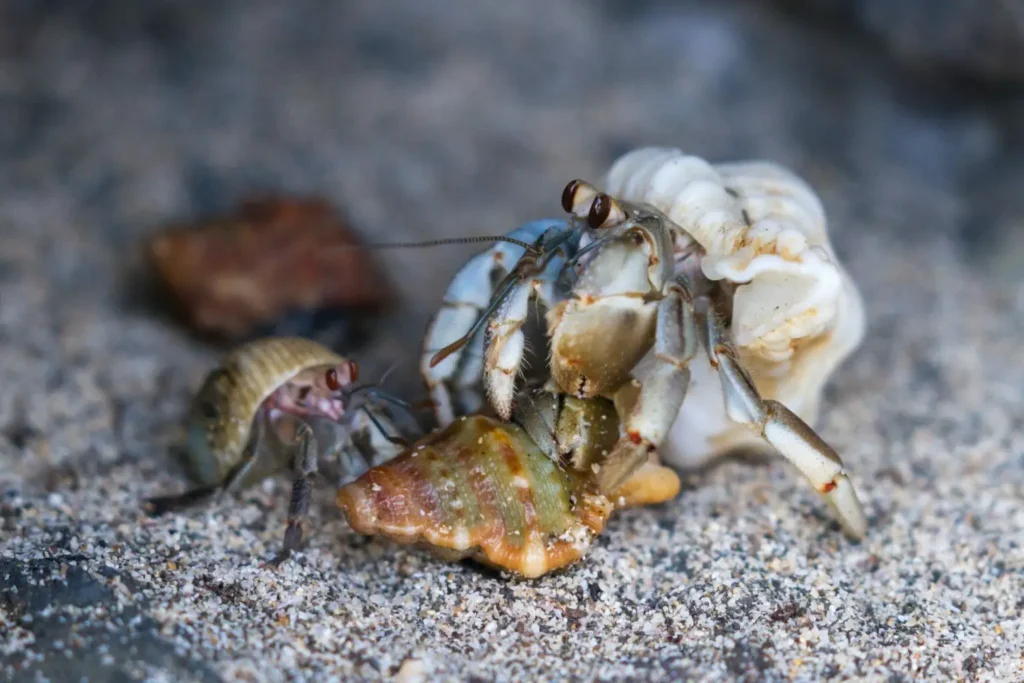How Long Does A Hermit Crab Live

Introduction
How Long Does A Hermit Crab Live: The hermit crab, a remarkable creature found in various marine and terrestrial habitats, has long intrigued both biologists and curious nature enthusiasts. One of the most intriguing aspects of their lives is the question of their longevity. This question has driven researchers to explore the secrets of their lifespan and uncover the factors that influence it.
Hermit crabs are not a single species but rather a diverse group of crustaceans belonging to the superfamily Paguroidea. They are known for their unique behavior of using empty snail shells as protective homes. Their lifespan, however, varies considerably depending on various factors, including species, environmental conditions, and even the availability of suitable shells.
Some hermit crab species may live only a few years, while others have been known to survive for several decades. Understanding the factors that contribute to their longevity is essential for appreciating the intricate web of life in their ecosystems.
We will delve into the fascinating world of hermit crabs and shed light on the mysteries of their lifespan. We will uncover the various aspects that influence how long these remarkable creatures can thrive in their ever-changing homes, from the depths of the ocean to the sandy shores of coastal habitats. So, join us on crab journey to unravel the secrets of how long a hermit crab can truly live.

How long do hermit crabs live as pets?
Hermit Crabs are wonderful pets that are easy to look after. The hermit crab has evolved to be able to live on land with the use of empty shells as a home and protection. With the right care, your hermit crab can live up to approximately 15 years.
Hermit crabs, popular pets in the world of small crustaceans, have a lifespan that varies depending on their species and the quality of care they receive. Generally, when provided with an optimal environment and proper attention, hermit crabs can live anywhere from 2 to 10 years in captivity. The most commonly kept species, the Caribbean hermit crab, typically lives for about 2 to 6 years, while some larger species like the Ecuadorian hermit crab can reach up to a decade.
A key factor in ensuring a healthy lifespan for a hermit crab is creating a habitat that mimics its natural surroundings. This includes a well-maintained enclosure with access to both land and water, as well as appropriate substrate for burrowing. Providing a varied and balanced diet consisting of fresh fruits, vegetables, and commercial crab food is crucial for their longevity. Additionally, regular monitoring of environmental conditions such as temperature and humidity levels is essential.
Regular check-ups with a knowledgeable exotic pet veterinarian can also contribute to a longer, healthier life for a hermit crab. By offering these creatures a suitable home and attentive care, one can enjoy the companionship of these fascinating crustaceans for many years.
What makes hermit crabs happy?
Hermit crabs thrive at humidity levels between 70% and 80%. Mist their terrarium with non-chlorinated water as necessary and use a hygrometer to keep track. Put a fluorescent or LED bulb in the terrarium hood to light the habitat for 8 to 12 hours a day. Do not use high-output UVB lighting for hermit crabs.
Ensuring the happiness of a hermit crab involves understanding and replicating their natural habitat as closely as possible. These creatures thrive when provided with a well-appointed enclosure that offers both land and water elements. A substrate that allows for digging and hiding is essential, as it mimics their burrowing tendencies in the wild. Additionally, offering a variety of shells for them to choose from is crucial, as hermit crabs rely on shells for protection and comfort.
Diet plays a pivotal role in their contentment. A balanced menu consisting of fresh fruits, vegetables, and occasional treats like dried shrimp or coconut flakes satisfies their nutritional needs and stimulates their foraging instincts. Maintaining proper humidity levels is crucial, as it helps them molt successfully and prevents respiratory issues.
Social creatures by nature, hermit crabs thrive in the company of their own kind. Providing ample space and suitable companions promotes a sense of security and reduces stress. Engaging activities like climbing structures, tunnels, and shallow pools enrich their environment, keeping them mentally stimulated and physically active.
Lastly, a calm and consistent environment is vital for their well-being. Sudden loud noises, vibrations, or frequent disturbances can cause stress. By creating a comfortable, naturalistic habitat and tending to their needs with care, one can ensure that a hermit crab lives a happy, fulfilling life in captivity.
Are hermit crabs friendly?
They’re not aggressive—friendly and fun if handled properly. They are disease-free—they do not carry human diseases and do not need to go to the vet. They are hypo-allergenic, meaning they’re a safe pet for children with allergies. They have a long lifespan, so hermit crabs can grow with your child.
Hermit crabs, though not traditionally considered “friendly” in the way dogs or cats might be, exhibit intriguing social behaviors and can form bonds with their caretakers. They’re known for their curious and inquisitive nature, often exploring their surroundings and interacting with objects in their environment. While they may not seek out direct interaction with humans, they can become accustomed to human presence and may even approach their caretaker, especially during feeding times.
Hermit crabs are also social creatures amongst their own kind. They thrive in groups, benefiting from the company of fellow crabs. Observing their interactions with each other can be fascinating, as they engage in activities like shell-swapping and cooperative burrowing.
It’s important to note that hermit crabs have their own way of expressing themselves. They may show signs of discomfort or stress if they feel threatened or are in an unsuitable environment. With patience and gentle handling, some individual hermit crabs may become more comfortable with human interaction over time.
Ultimately, while hermit crabs may not exhibit the same type of “friendliness” as more domesticated pets, they offer their own unique brand of companionship and can be a source of fascination for those willing to observe and appreciate their natural behaviors.
How long will hermit crabs live?
30 years
Hermit crabs can live 30 years or more in the wild, whereas they typically die within a year as pets. The wild hermit crab has a life expectancy of 30 years if it is allowed to remain in its native habitat. In fact, the world’s oldest hermit crabs can live past 40 years old!
The lifespan of a hermit crab varies based on several factors, including species, habitat quality, and overall care. In the wild, hermit crabs typically live for about 5 to 15 years, depending on the species. However, when kept as pets in captivity, their lifespan tends to be somewhat shorter.
The most commonly kept species, the Caribbean hermit crab, typically lives for about 2 to 6 years in captivity. Larger species like the Ecuadorian hermit crab may have a longer lifespan, sometimes reaching up to a decade.
The key to ensuring a hermit crab’s longevity is providing a suitable environment that mirrors their natural habitat. This includes offering a mix of land and water areas, providing a variety of shells for them to choose from, and maintaining proper substrate for burrowing. A balanced diet of fresh fruits, vegetables, and commercial crab food is crucial for their well-being. Additionally, consistent monitoring of environmental conditions such as temperature and humidity levels is essential.
Regular check-ups with a knowledgeable exotic pet veterinarian can also contribute to a longer, healthier life for a hermit crab. By offering them a comfortable and stimulating environment, along with attentive care, one can maximize the lifespan and quality of life for these fascinating crustaceans.
Why don’t hermit crabs live long?
To their caretakers, captive hermies might seem to be acting normally, but over time, many crabs actually die slowly from suffocation because their modified gills require high humidity in order to breathe. 5. Hermit crabs also are often slowly poisoned by tap water and/or the toxic paint adorning their shells.
Hermit crabs have relatively short lifespans, especially in comparison to some other pets, due to a combination of biological and environmental factors. In their natural habitat, they face numerous challenges that can limit their longevity. Predation, competition for resources, and environmental changes are constant threats. Additionally, their exoskeletons, while providing protection, must be periodically shed through a process called molting. This process can be physically demanding and stressful, and it becomes riskier as the crab grows larger.
In captivity, several factors contribute to their relatively short lifespan. Many hermit crabs are captured from the wild, a process that can be stressful and potentially harmful to their health. Suboptimal living conditions, including inadequate temperature, humidity levels, and lack of proper substrate for burrowing, can also take a toll. A diet lacking in essential nutrients or variations can lead to health issues.
Without access to a suitable variety of shells, hermit crabs may struggle to find proper protection, which can increase their vulnerability. Inadequate socialization or isolation from their own kind can also lead to stress and health problems. Providing a well-researched, stimulating environment and attentive care can significantly enhance their quality of life and, consequently, their lifespan.
How does the molting process affect their lifespan?
The molting process is a pivotal factor in how a hermit crab’s lifespan is influenced. Hermit crabs, like all arthropods, have exoskeletons, rigid outer shells that protect their soft internal bodies. However, as they grow, these exoskeletons become constrictive, and molting becomes necessary for their survival.
During molting, a hermit crab sheds its old exoskeleton and emerges with a new, larger one. This process allows them to accommodate their growing bodies, continue their growth, and potentially extend their lifespan. It also provides an opportunity to repair any damage or injuries to their exoskeleton, improving their overall health and resilience.
However, molting is a vulnerable period for hermit crabs. While they are soft-bodied after shedding their exoskeleton, they are exposed to predation and environmental risks. Finding a safe location and a suitable shell to inhabit immediately after molting is crucial for their survival.
A successful molt can have a significant impact on a hermit crab’s lifespan by ensuring they can continue to grow, find sufficient resources, and avoid predators. On the other hand, failed or interrupted molts can be detrimental and may lead to reduced lifespan or mortality.
The molting process is a critical element in a hermit crab’s life cycle, directly influencing their growth and overall lifespan. It highlights their remarkable adaptability and underscores the challenges they face in their quest for a longer and healthier life in the ever-changing world of their habitats.
What are common signs of an aging hermit crab?
Common signs of an aging hermit crab can offer valuable insights into their changing biology and behavior. As hermit crabs grow older, several noticeable indicators may emerge:
- Slower Activity: Aging hermit crabs tend to become less active compared to their younger counterparts. They may move more sluggishly and spend longer periods inside their shells.
- Shell Condition: Over time, the shell that a hermit crab inhabits can show signs of wear and tear. Older hermit crabs may have shells with visible damage, such as chipped or eroded openings.
- Faded Color: The vibrant colors of a hermit crab may begin to fade as they age. Their exoskeleton may lose some of its luster and become duller.
- Reduced Growth: Hermit crabs continue to molt and grow throughout their lives, but the rate of growth generally slows down with age. Smaller growth increments between molts can be a sign of aging.
- Less Aggressive Behavior: Younger hermit crabs can be more aggressive in competing for shells and resources. As they age, they may become less aggressive and more passive in their interactions with other crabs.
- Decreased Appetite: Older hermit crabs may have reduced appetites, leading to less frequent feeding and a gradual decline in overall body condition.
- Shell Selection: Aging hermit crabs may become more selective when choosing shells, favoring larger and more protective options to ensure their continued safety.
Understanding these signs of aging in hermit crabs can be essential for their care in captivity and can provide valuable insights into the natural aging process of these intriguing crustaceans in the wild.
How can I ensure a long and healthy life for my hermit crab?
Ensuring a long and healthy life for your hermit crab requires thoughtful care and attention to their unique needs. First and foremost, provide them with an appropriate habitat. A glass or plastic tank with a secure lid is essential to maintain humidity and prevent escapes. Substrates, such as sand and coconut fiber, should be deep enough for burrowing and moulting.
Maintaining the right temperature and humidity is crucial. Hermit crabs thrive in a tropical environment, so keep the temperature around 75-85°F (24-29°C) and humidity at 70-80%. Regular misting and a shallow dish of dechlorinated water for drinking and bathing are essential.
Feeding your hermit crab a balanced diet is vital for their health. Offer a variety of foods like fresh fruits, vegetables, and high-quality commercial hermit crab pellets. Avoid toxic or harmful substances like pesticides or chemically treated wood in their habitat.
Shell selection is another key factor. Ensure a variety of shell sizes are available for your crab to choose from as they grow. A proper shell fit prevents stress and promotes molting.
Lastly, handle your hermit crab gently and minimally, as they can be easily stressed. With proper care, attention, and a suitable environment, you can help ensure a long and healthy life for your beloved hermit crab.

Conclusion
The lifespan of a hermit crab is a complex and intriguing subject that encompasses a wide range of variables. These fascinating creatures have adapted to diverse environments, from the world’s ocean to coastal areas, and their longevity is influenced by numerous factors.
We’ve learned that the species of hermit crab plays a significant role in determining their lifespan, with some living only a few years, while others may thrive for several decades. Additionally, environmental conditions, such as temperature, humidity, and food availability, can greatly impact their longevity. Hermit crabs are also reliant on finding suitable shells to protect themselves, and the availability of these shells can affect their survival.
The hermit crab’s ability to molt and grow into larger shells as they age allows them to extend their lifespans. This unique adaptation is a testament to their resilience and adaptability in the face of changing circumstances.
Studying the lifespan of hermit crabs not only provides insight into their biology but also underscores the interconnectedness of ecosystems. These creatures play a vital role in maintaining the health of their environments, and understanding their lifespan contributes to our broader understanding of marine and coastal ecosystems.



